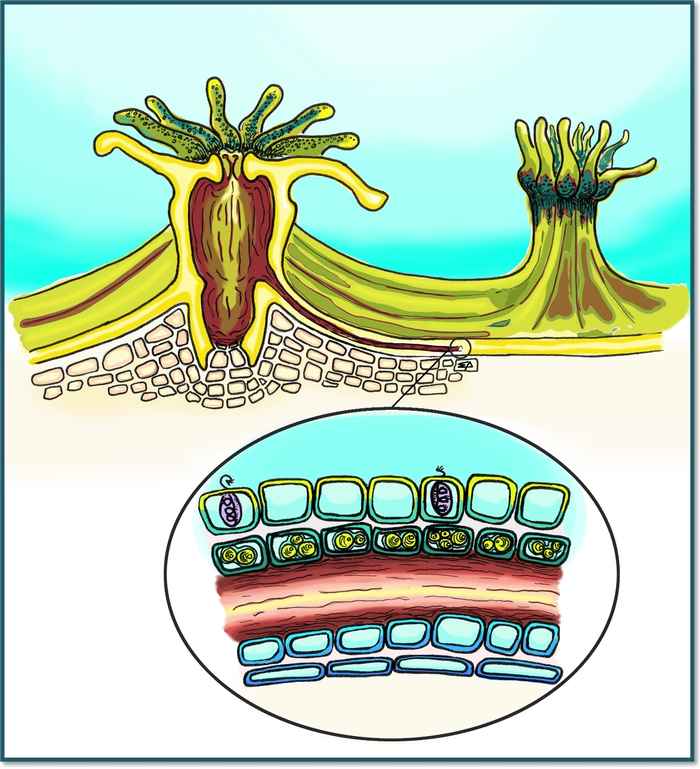Modelling calcification physiology in corals and impact of ocean acidification
19 January 2023
Researchers Helena Willard and Jaap Kaandorp of the Computational Science Lab (CSL) of the Informatics Institute, think that it is of fundamental importance to have a correct understanding of this mechanism of this process and have developed a computational model.
So far, the average pH of the ocean’s surface has dropped by 0.1 units relative to pre-industrial levels, and it is expected to take tens of thousands of years to potentially reverse this change. The effect of this decreased pH is yet another potential threat to marine life, with coral reefs considered particularly vulnerable. The existence of coral reefs is reliant on the skeletons built by calcifying organisms such as scleractinian corals. The calcification process is taking place in a small layer of living tissue covering the coral skeleton.
Although ocean acidification may have a major impact on calcification in corals, there are many open questions about the calcification physiology in corals.
New computational model
When reviewing the literature many different hypotheses have been described on the mechanism of calcification physiology. Willard and Kaandorp tested four generally used hypotheses on the transport of chemical agents in the calcifying tissue and four of the frequently used hypotheses on the role of photosynthesis during the calcification process. According to the researchers this is the first spatio-temporal model of calcification physiology in corals. The computational model has been used to test quantitatively the eight hypotheses mentioned above. With the computational model the experimental data from three separate studies can be reproduced. With the model the researchers demonstrate a direct link with the increase in ATP consumption under acidified conditions and the energy budget of the coral.
Research information
An article about this research has recently been accepted for publication in the Journal of Theoretical Biology. Helena Willard, first author, has done this work as part of her graduation work for the master Computational Science.
Testing hypotheses on the calcification in scleractinian corals using a spatio-temporal model that shows a high degree of robustness.
https://doi.org/10.1016/j.jtbi.2022.111382
